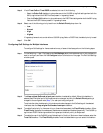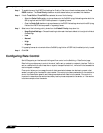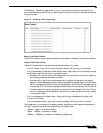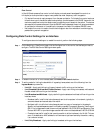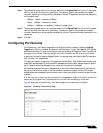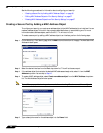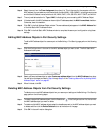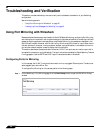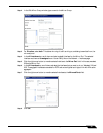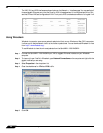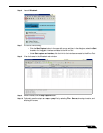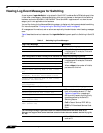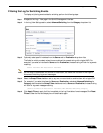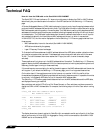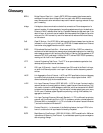
Glossary
45
SonicOS 5.7: Advanced Switching Feature Guide and Screencast Tutorial
Glossary
BPDU Bridge Protocol Data Unit – Used in RSTP, BPDUs are special data frames used to
exchange information about bridge IDs and root path costs. BPDUs are exchanged
every few seconds to allow switches to keep track of network topology and start or stop
port forwarding.
bridge A bridge is a data communications device that connects two Ethernet segments of a
network together. A bridge operates by forwarding packets according to the destination
Ethernet, or MAC, address, rather than by IP address. Because a bridge uses Layer 2, the
data link layer, all protocols can be handled. Switches operate like bridges, but provide
more ports for LAN connectivity and offer features that reduce collisions and latency
on the network.
CoS Class Of Service – Cos (IEEE 802.1p) defines eight different classes of service that are
indicated in a 3-bit user_priority field in an IEEE 802.1Q header added to an Ethernet
frame when using tagged frames on an 802.1 network.
DSCP Differentiated Services Code Point – Also known as DiffServ, DSCP is a networking
architecture that defines a simple, coarse-grained, class-based mechanism for classifying
and managing network traffic and providing Quality of Service (QoS) guarantees on IP
networks. RFC 2475, published in 1998 by the IETF, defines DSCP. DSCP operates by
marking an 8-bit field in the IP packet header.
IETF Internet Engineering Task Force – The IETF is an open standards organization that
develops and promotes Internet standards.
L2 OSI Layer 2 (Ethernet) – Layer 2 of the seven layer OSI model is the Data Link Layer,
on which the Ethernet protocol runs. Layer 2 is used to transfer data among network
entities.
LACP Link Aggregation Control Protocol – LACP is an IEEE specification that provides a way
to combine multiple physical ports together to form a single logical channel. LACP
allows load balancing by the connected devices.
LLDP Link Layer Discovery Protocol (IEEE 802.1AB) – LLDP is a Layer 2 protocol used by
network devices to communicate their identity, capabilities, and interconnections. This
information is stored in a MIB database on each host, which can be queried with SNMP
to determine the network topology. The information includes system name, port name,
VLAN name, IP address, system capabilities (switching, routing), MAC address, link
aggregation, and more.
LLTD Link Layer Topology Discovery (Microsoft Standard) – LLTD is a Microsoft proprietary
protocol with functionality similar to LLDP. It operates on wired or wireless networks
(Ethernet 802.3 or wireless 802.11). LLTD is included on Windows Vista and Windows
7, and can be installed on Windows XP.
PDU Protocol Data Unit – In the context of the Switching feature, the Layer 2 PDU is the
frame. It contains the link layer header followed by the packet.
RSTP Rapid Spanning Tree Protocol (IEEE 802.1D-2004) – RSTP was defined in 1998 as an
improvement to Spanning Tree Protocol. It provides faster spanning tree convergence
after a topology change.



